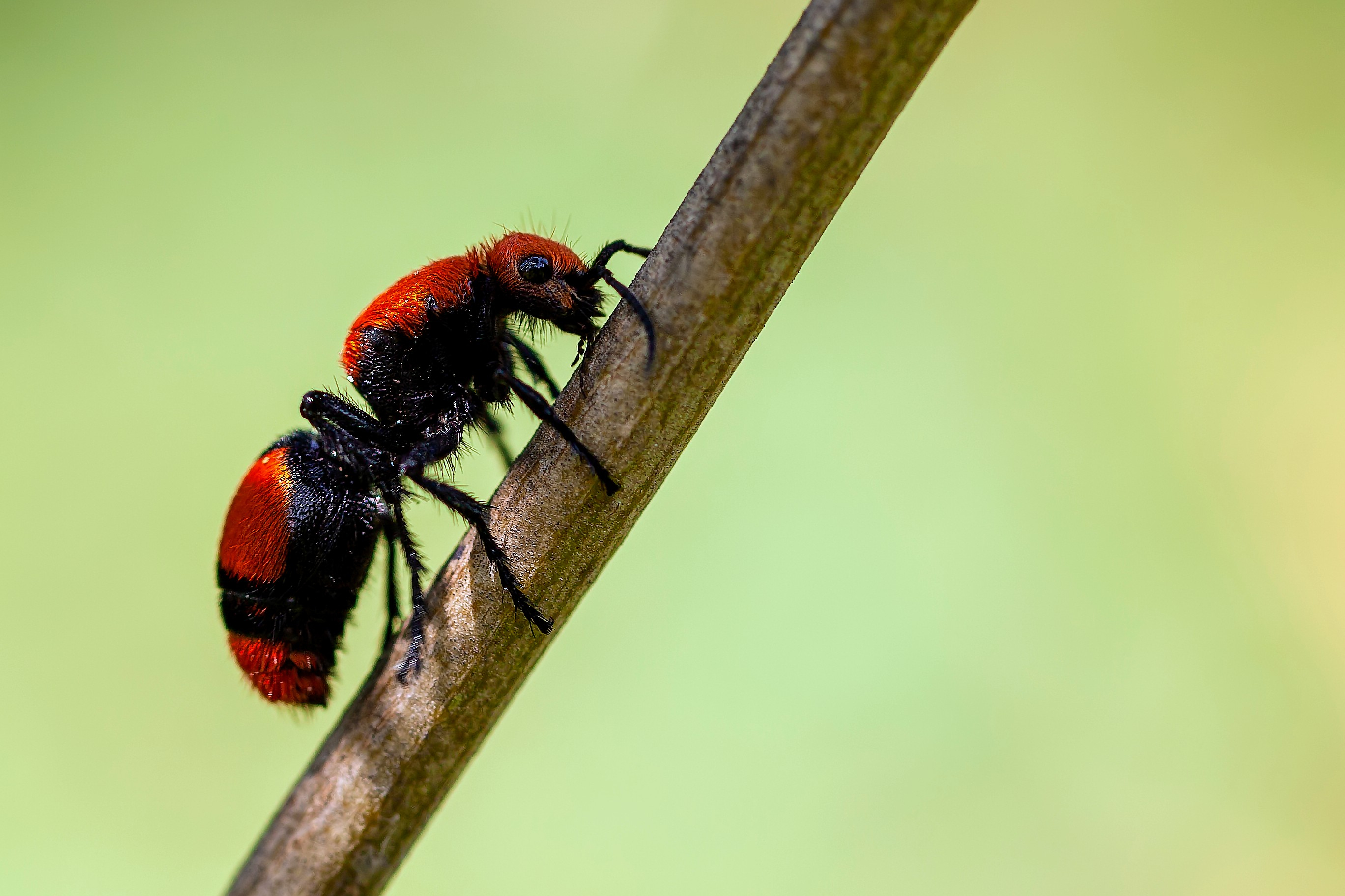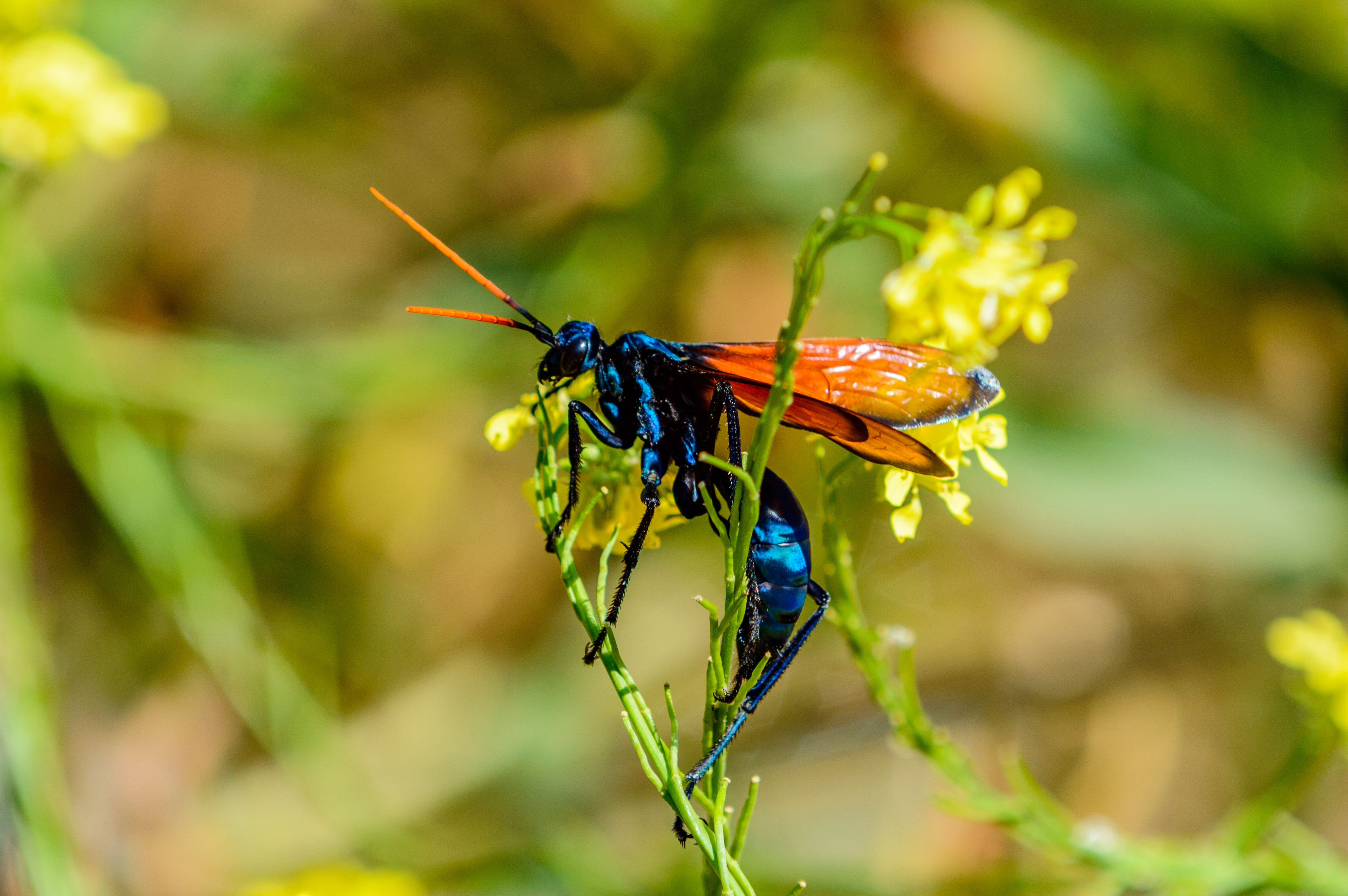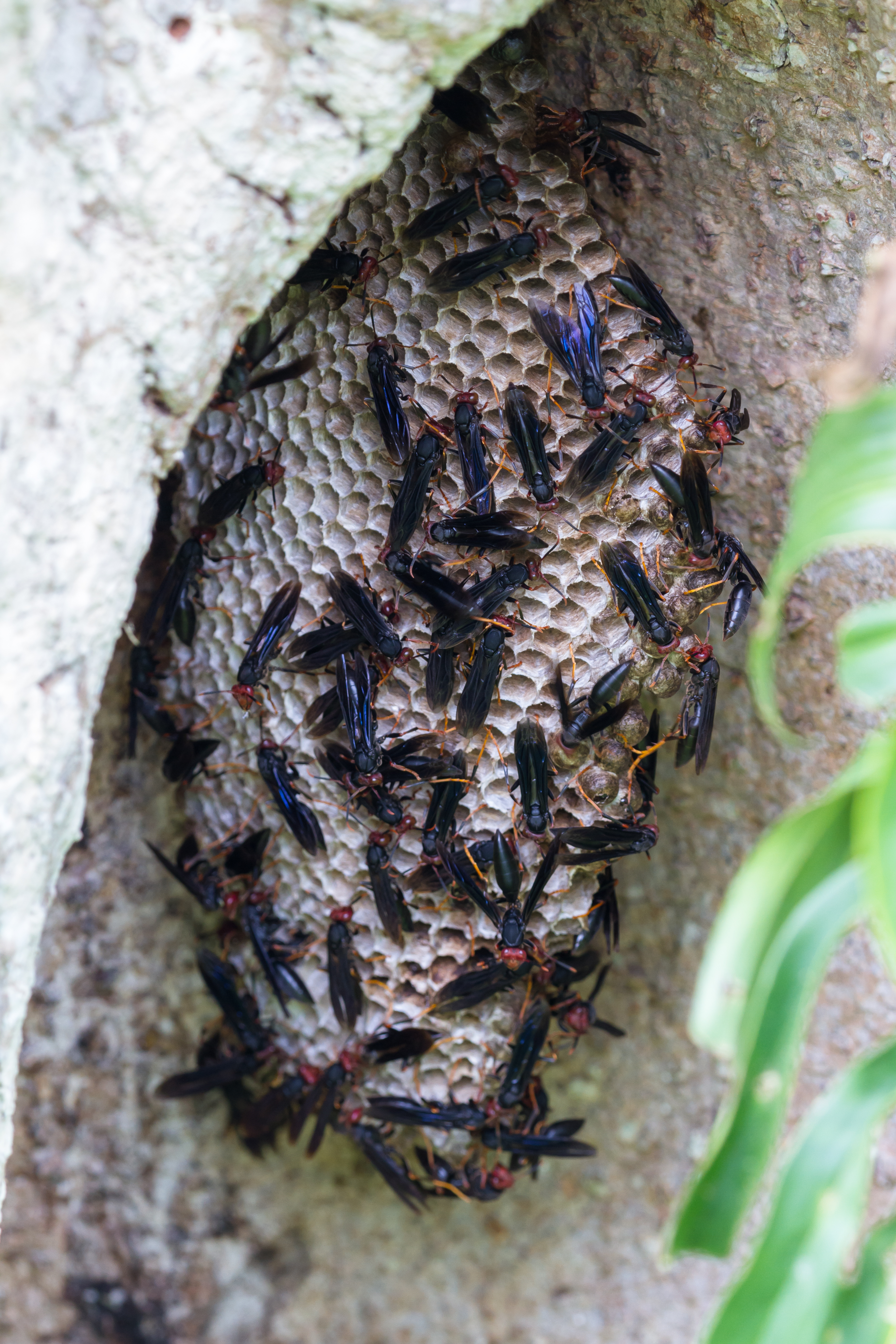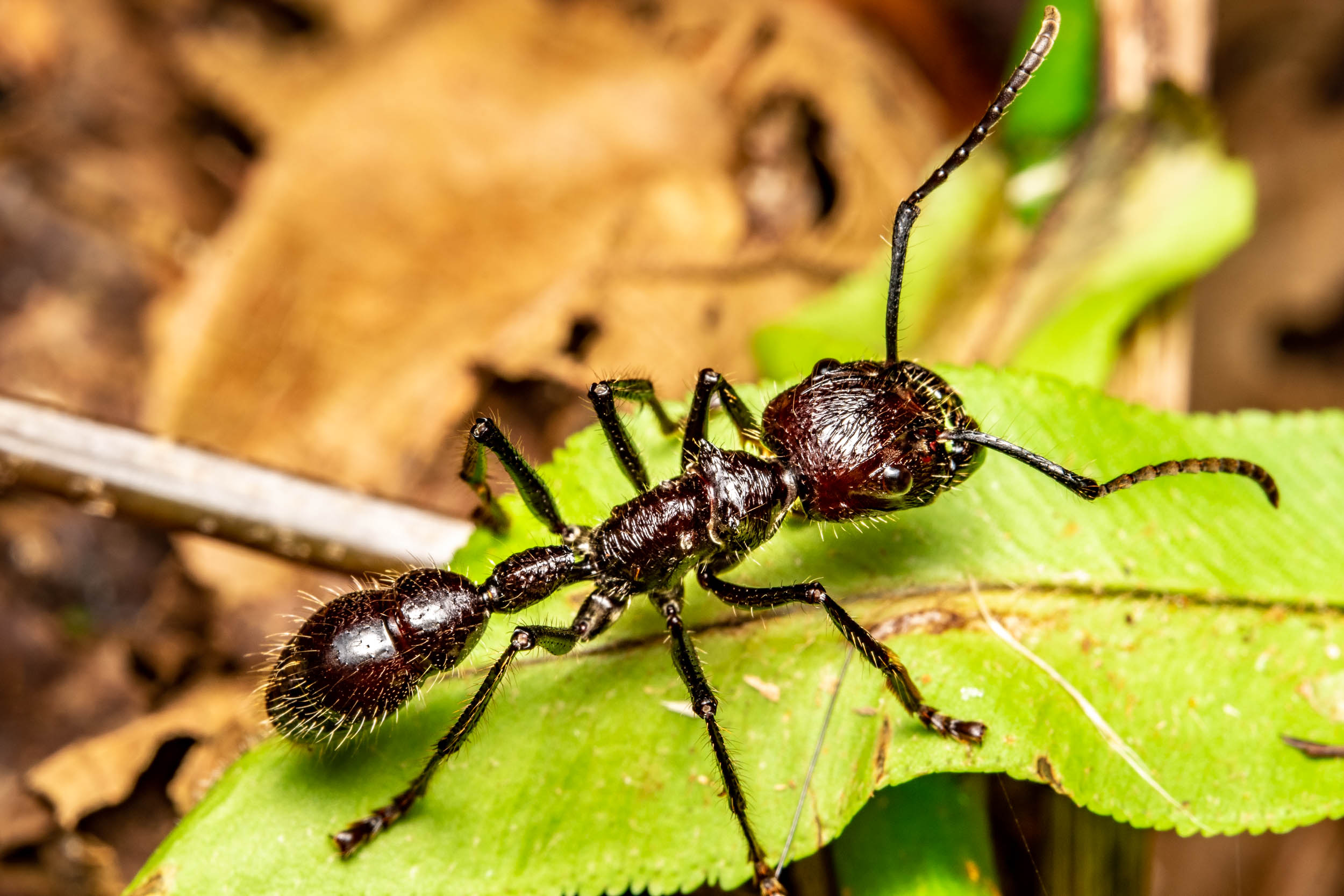Imagine you’re taking a delightful stroll through a wooded area, it is idyllic and peaceful… until you get a sharp pain. You look down and realize that you have just been stung by a ferocious insect that is already flying away. Already, the sting site is getting warm and beginning to throb. Being stung by a creepy crawly can be horrific and is definitely a day-destroyer. However, not all stings feel the same – so what insect causes the most painful sting?
ADVERTISEMENT
There is one entomologist that people look to for the answer to this question: Dr Justin Schmidt, who was known as the “King of Sting” and was the author of The Sting Of The Wild. He was an American entomologist who was known for allowing insects to sting him and ranking the pain on a scale of one to four (four being the most painful) – this was known as the Schmidt Sting Pain Index. We have listed a few of the insects that were at the top of his list.
Velvet ant
Dasymutilla klugii

And what a fuzzy little bug it is as well! But no touchy!
Image credit: pixelworlds/Shutterstock.com
These adorable-looking insects may be fuzzy and cute (to some people), but it is not recommended you go anywhere near them.
Despite their name, the huge velvet ants are not ants but wasps – female wasps are wingless, while males do have wings and just the teeniest bit of fuzz. They also have the uncomfortable name of “cow killer”, although they do not actually kill cows, just legends say the sting is strong enough to kill one. They are frequent summer visitors to the southern United States and Midwest and can be seen in people’s yards and parks.
They have a lot of defense mechanisms, such as having incredibly hard body armor and powerful legs to get out of the grasp of any predators. They have one of the longest stingers relative to body size of any stinging ant, bee, or wasp (almost half the body length) – this allows the insect to sting predators or humans that foolishly mess with them very widely.
The pain is extreme. “Explosive and long lasting, you sound insane as you scream. Hot oil from the deep fryer spilling over your entire hand,” describes Schmidt, who gave the venom a three on the Schmidt scale.
The pain continues for five to 10 minutes before it releases and leaves the victim with a rashy, nettle-like discomfort that combines itchiness and hurt. Anyone who dares to rub at this area increases both. While the pain is incredible, the venom has low toxicity and lethality.
Tarantula hawk
Pepsis spp.

If so painful, why so pretty?
Image credit: Robert Briggs/Shutterstock.com
It is neither a tarantula nor a hawk, but a gorgeous and vibrant solitary wasp. They are among the largest members of the spider wasp family and part of the 5,000 species that prey solely on spiders. With a name like the tarantula hawk, it is no surprise that they target tarantulas. This is one of the reasons why their venom is so painful; to bring down the most fearsome spider, you have to pack a punch.
When the female wasps are mated, they then go in search of tarantulas. The females are not fussy about the size, sex, or species of the tarantula, however, the biggest and plumpest ones often become used to lay female eggs on.
The wasps sting the tarantulas as close to the large nerve ganglion as possible, which inactivates and permanently paralyzes the spider within seconds. The spider is then dragged (sometimes weighing eight times more than the wasp) into a cell at the bottom of a nest tunnel and an egg is laid on top of the spider and the tunnel is filled with dirt. The egg hatches after a few days and the larvae start eating the still alive but paralyzed spider. The wasp eats all the blood, muscle, fat, reproductive, and digestive systems, until only the heart and nervous system is left.
At the fifth instar, it rapidly eats the rest of the spider (before it decays), spins a silken cocoon, and pupates. Then the adult females emerge to repeat the cycle, with males only living a few weeks to mate and females living four to five months.
ADVERTISEMENT
If stung by this wasp, Schmidt’s advice is to lie down and scream as the pain is so bad that the victim is more at risk of further injury while in the throes of agony.
“Blinding, fierce, shockingly electric. A running hair dryer has just been dropped into your bubble bath.”, Schmidt described, giving this pain a four.
Despite the painful venom, it is not that lethal as the tarantulas need to be kept alive if the wasps’ young are to develop in time.
Warrior (or armadillo) wasp
Synoeca septentrionalis

They just look like a ball of death.
Image credit: Nature’s Charm/Shutterstock.com
The warrior wasp is native to tropical regions of South America. They are extremely feared because they have an aggressive nest defense and come with a nasty sting. They are huge, swarm-founding (swarms of these wasps find a nesting site and build a nest together) social wasps. They have a very distinctive black or dark blue almost metallic appearance.
ADVERTISEMENT
What is interesting is that they have a very characteristic nest-building structure. The nest is an immobile brood comb that is built directly into a rock or tree. This nest is then covered in a single layer of the envelope (paper), with a single entrance hole that is at the top of the nest.
Their defensive behavior is what scares people. Firstly, they start drumming on the nest surface, which is one of the reasons why they are called warrior wasps. If the irritant is not removed, then the wasps attack en masse and will use their stingers to defend themselves.
“Torture. You are chained in the flow of an active volcano. Why did I start this list?” Schmidt described. He gave this sting a four on the scale.
Bullet ant
Paraponera clavata

You might think, how much pain can a little ant cause? … The worst ever!
Image credit: Andres Nunez Mora/Shutterstock.com
Classed as one of the most painful stinging insects by Schmidt, the bullet ant is much feared. It has a stocky black body, bulbous head with strong jaws, and fine hairs covering its body. Luckily, no one has ever died from a bullet ant sting, but it is known as one of the worst.
ADVERTISEMENT
They are a bit different from other ants, they live mainly in nests in the ground, near the base of trees. They prefer to forage in the forest canopy and are scavengers.
They are active both day and night and typically inhabit moist forests that stretch along the Atlantic Ocean side of the continental divide.
Victims of this ant liken the pain to being hit by a bullet. “Pure, intense, brilliant pain. Like walking over flaming charcoal with a 3-inch [8-centimeter] nail embedded in your heel,” says Schmidt, giving this critter a four.
“If I made a five on the scale,” he told Smithsonian Magazine in 2016, “it would be just the bullet ant and nothing else.”
ADVERTISEMENT
People describe this pain as lasting several hours and can cause people to vomit and overheat. These ants belong to the family Formicidae, which is the same family as the closely related formic acid-spraying carpenter ants.
The sting of bullet ants is sometimes used by Indigenous peoples in the Pará and Amazonas states in Brazil as ceremonial rites of manhood. One such ritual involves a person placing their hand inside a cylindrical muff that is filled with bullet ants, if they can keep their hand in the mitt for a certain length of time then they are fit to marry.
According to Schmidt’s book, the ant venom itself is highly lethal to mammals that are the size of a young female Norway rat. However, in humans, there is low membrane and tissue damage.
So, if you go down in the woods tonight, you’re sure of a big surprise – if you are not careful. You may catch one of our insect friends giving you the sting of a lifetime.
Source Link: The 4 Worst Insect Stings: Which Creepy Crawly Packs The Most Painful Punch?